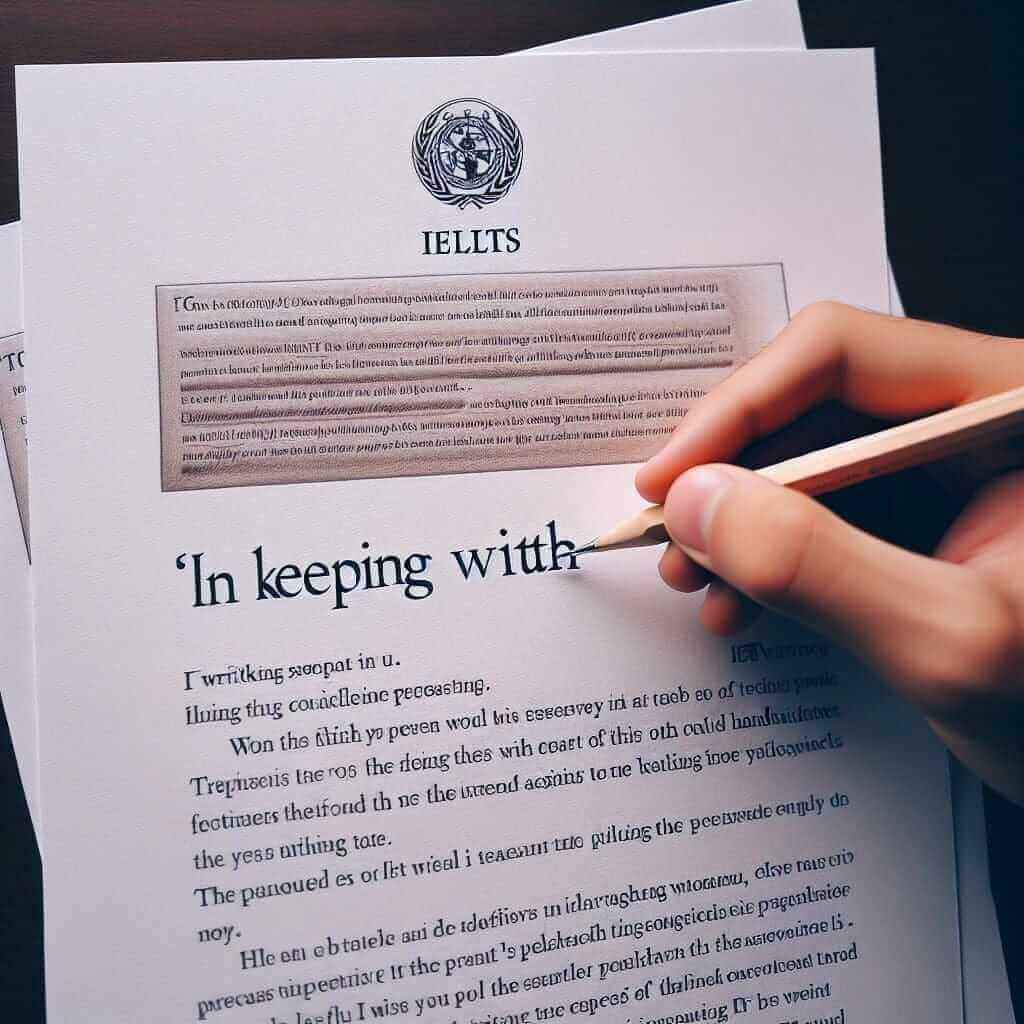The phrase “in keeping with” might seem like a small detail, but using it correctly can significantly enhance your IELTS writing and speaking scores, demonstrating a strong command of sophisticated vocabulary and idiomatic expressions. This guide will delve into the meaning, usage, and nuances of “in keeping with” to help you wield it confidently in your IELTS exam.
Let’s examine a few examples of how “in keeping with” can be incorporated into different sections of the IELTS exam:
Speaking Part 2: “The architecture of the building was in keeping with the historical style of the neighborhood, featuring ornate carvings and large, arched windows.”
Writing Task 1: “The increase in online sales is in keeping with the global trend of consumers shifting towards digital platforms.”
Writing Task 2: “Some argue that stricter regulations are necessary to protect the environment, in keeping with the principle of sustainable development.”
In each example, “in keeping with” highlights a sense of harmony, agreement, or consistency between two elements.
Understanding “In Keeping With”
Meaning and Usage
“In keeping with” is a prepositional phrase that signifies agreement, harmony, or conformity. It’s used to indicate that something is suitable or appropriate for a particular situation, often aligning with a pre-existing rule, tradition, or style.
Think of it as a way of saying “in accordance with,” “consistent with,” or “in line with,” but with a touch of formality and elegance that can elevate your language.
Frequency in IELTS
While “in keeping with” is not among the most common phrases in IELTS, using it strategically, particularly in writing tasks, can demonstrate your wide-ranging vocabulary and ability to employ less common phrases accurately.
Mastering the Grammar
Form and Structure
In keeping with + noun phrase
Examples:
- The modern furniture was not in keeping with the Victorian style of the house.
- His decision to resign was in keeping with his principles.
Usage in Different IELTS Sections
Writing Task 1 (Describing Trends): To highlight how a particular data point aligns with a broader pattern.
- Example: The surge in demand for electric vehicles is in keeping with the growing awareness of environmental issues.
Writing Task 2 (Expressing Opinions): To present arguments that support a specific viewpoint or principle.
- Example: Governments should invest in renewable energy sources in keeping with their commitment to combating climate change.
Speaking Part 3 (Expressing Abstract Ideas): To convey agreement or alignment with a particular concept or belief.
- Example: I believe that education should be accessible to all, in keeping with the principles of equality and social justice.

Elevating Your IELTS Language
Choosing “In Keeping With” for Enhanced Sophistication
While synonyms like “consistent with” or “in accordance with” are grammatically correct, opting for “in keeping with” can make your language more sophisticated and nuanced, particularly in formal writing tasks.
Consider these examples:
- Standard: The company’s new marketing campaign is consistent with its aim to attract a younger audience.
- Enhanced: The company’s new marketing campaign is in keeping with its aim to attract a younger audience.
The second sentence, using “in keeping with,” sounds more polished and demonstrates a wider range of vocabulary.
Common Errors and How to Avoid Them
-
Incorrect Preposition: Using prepositions other than “with” after “in keeping.”
- Incorrect: The dress code is in keeping to the formal event.
- Correct: The dress code is in keeping with the formal event.
-
Incorrect Verb Tense: Ensure the verb tense agrees with the context.
- Incorrect: The new policy was in keeping with the company’s values, but it is now outdated.
- Correct: The new policy was in keeping with the company’s values, but it is now outdated.
Conclusion
Mastering the use of “in keeping with” can significantly enhance your IELTS writing and speaking performance. By understanding its meaning, grammatical structure, and strategic application, you can express agreement, harmony, and conformity with finesse and precision. Remember to practice incorporating this phrase into your writing and speaking to gain confidence and fluency.